Door Knockers Win the No-Bell Prize
Antique door knockers add charm to entryways, and are still in demand in the collectibles market.
The history of door knockers is sketchy at best, but one of the earliest may be traced back to the time before Christ. It was unearthed in the town of Olynthos, located in ancient Macedonia, and is thought to have dated to around 400 B.C.
Other reference is made to them throughout the centuries. The classic ring door knocker is one of the first styles introduced, and there is a tale that goes along with its use. This type of door knocker decorated the entranceways on churches and cathedrals during medieval times. These rings were used as a measure to help those who needed to gain sanctuary. If a poor soul was being pursued by the civil authorities, his goal was to reach the church and grab onto the ring before being caught. Supposedly, this act would protect him, keeping him safe from capture or arrest.
Looking back through architectural annals, door knockers were used extensively during Georgian times in England and throughout Europe. In Colonial America, they were found on many homes and considered a sign of status, used to impress those who approached the front door.
In the sixteen and seventeen hundreds, door knockers were constructed of wrought iron or some other metal such as bronze. Later cast iron and brass were used in manufacturing them.
There is quite an unusual story associated with one famous door knocker: the Brasenose Knocker. Its name is thought to have originated from a brazen (bronze) door knocker in the shape of a nose. The nose-shaped door knocker hangs above the high table in the main hall of Brasenose College in Oxford. It is thought to be the original door knocker, belonging to Brasenose Hall. Apparently, in the 1300s, a group of students left Oxford for Stamford in Lincolnshire. The group was led by a student from Brasenose Hall. It is thought that they took the door knocker with them.
Hundreds of years later, in 1890, a house situated in Stamford, called Brasenose, was adorned with a twelfth-century door knocker, shaped like a nose. At some point, the house was advertised for sale. Brasenose College purchased the house for the sole purpose of retrieving the door knocker. It was removed from the house and installed in Brasenose Hall, its rightful home. This turned out to be quite an expensive door knocker.
In the mid-nineteenth century, the use of door knockers was on the decline, due to a shift in architectural styles, and the advent of the electric doorbell made them all but obsolete. However, this does not mean that door knockers will ever disappear.
The market for antique ones shows that they are still in demand, and have been for some time. Many of the antique varieties date to the 1600s and are quite valuable, with some costing many hundreds of dollars, and even thousands. I came across an auction results notice that was published in the New York Times and dated May 20, 1920. In the advertisement, it was stated that quite a few antique iron door knockers, dating from the seventeenth century, were sold at that auction, fetching in the hundreds of dollars. Along with antique door knockers, there are also several fine reproductions available, starting in the $20 to $40 range.
Today, door knockers are found at the entrances of authentic and reproduction colonial and early American homes, as well as other old-style houses. They add so much to exterior doors, and they do not need to stop at the front door. It is also a great decorating idea to display pieces from a collection on some of the doors within a home.
The classic ring door knocker comes in many designs. Each has its unique style, such as a rope ring, which has a nautical theme, the iron forged ring and the simple pull ring. Although they are somewhat different, they are all based on the original concept of those found on the doors of medieval churches.
There are several colonial styles, such as the Blair House door knocker, as shown on the front doors of Potter Mansion. The home was built circa 1776 in North Brookfield, Mass., but has since been moved to Storrowton Village in West Springfield, Mass. This style of knocker is so named because the original one welcomed guests to the Blair House in Washington, D.C.
Another great example is the door knocker of a Federal Eagle with a shield. The eagle design is uniquely American and it was during and after the Revolutionary War that this form became popular. There is one that enhances the entrance of the Elihu Colton home, a large circa 1765 colonial in Longmeadow, Mass.
Urn-shaped door knockers were also popular and have room for the homeowner’s name or monogram on the medallion in the center. Door knockers can also be found in several animal motifs. The lion’s head design was first displayed in the 1700s on the front door of the British prime minister’s residence. There are several examples of the lion’s head door knocker, including several that have an elongated design of the head, along with a ball at the base.
The colonists brought their architectural concepts, including door knockers, from the old country and incorporated them into their homes here in America and this is but a small sampling of them from our history.
Door knockers complement any door. And to me, the rapping sound the knocker makes when it is raised and then tapped against the door is the sound of colonial America. I can just hear Paul Revere knocking on the door of Jonas Clark’s Parsonage, in Lexington, to alert John Hancock that the British regulars are coming.
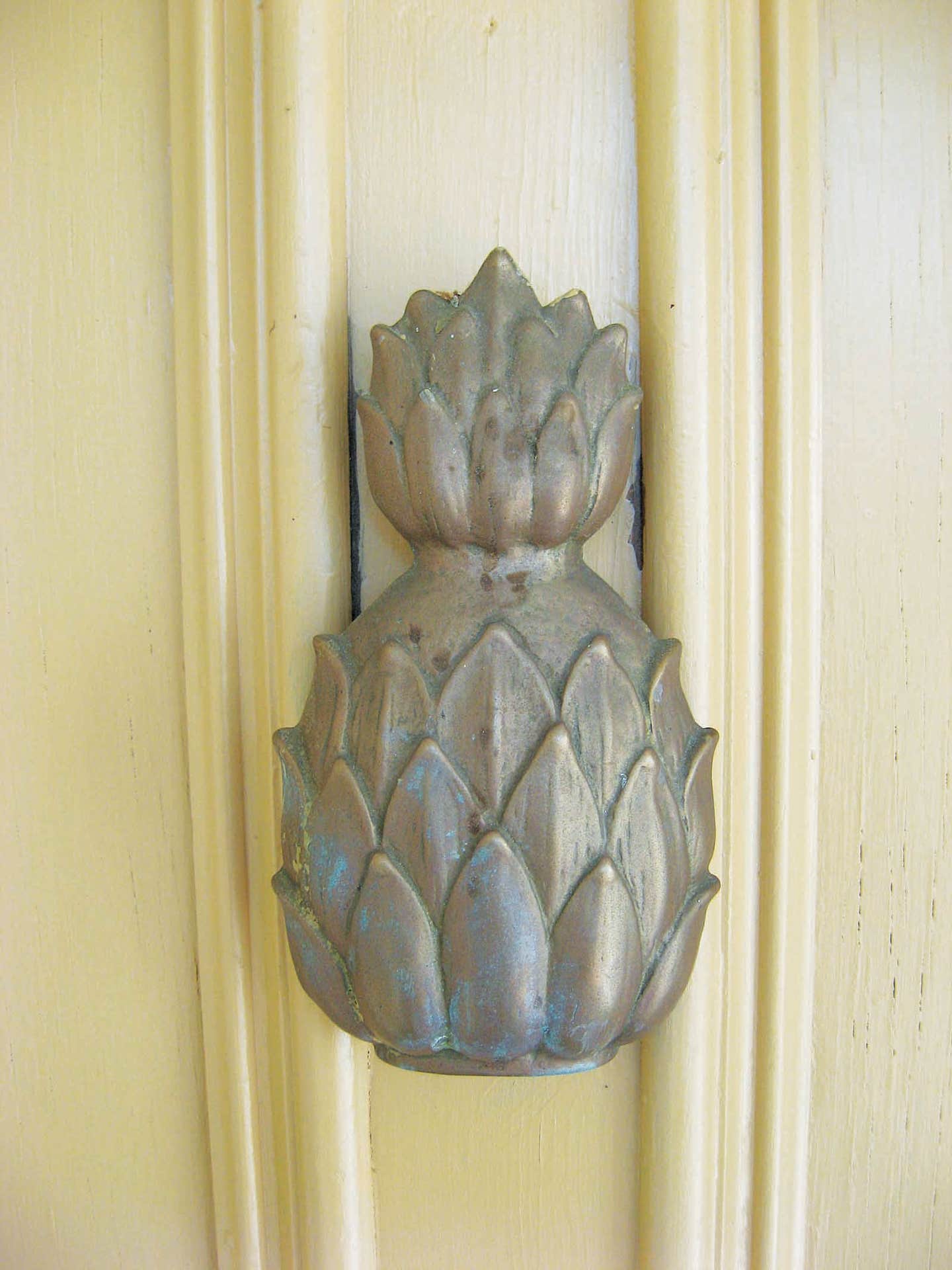
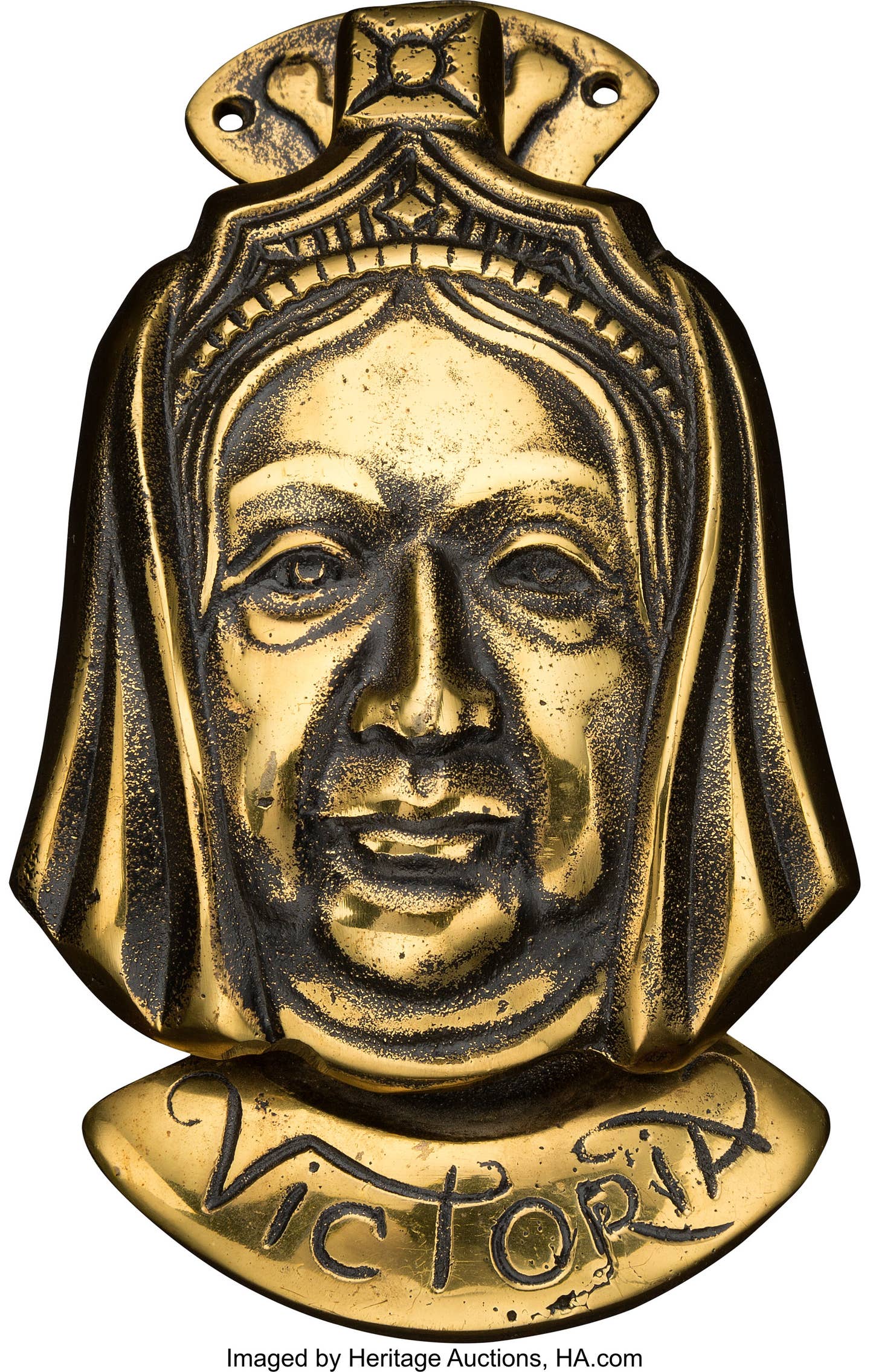
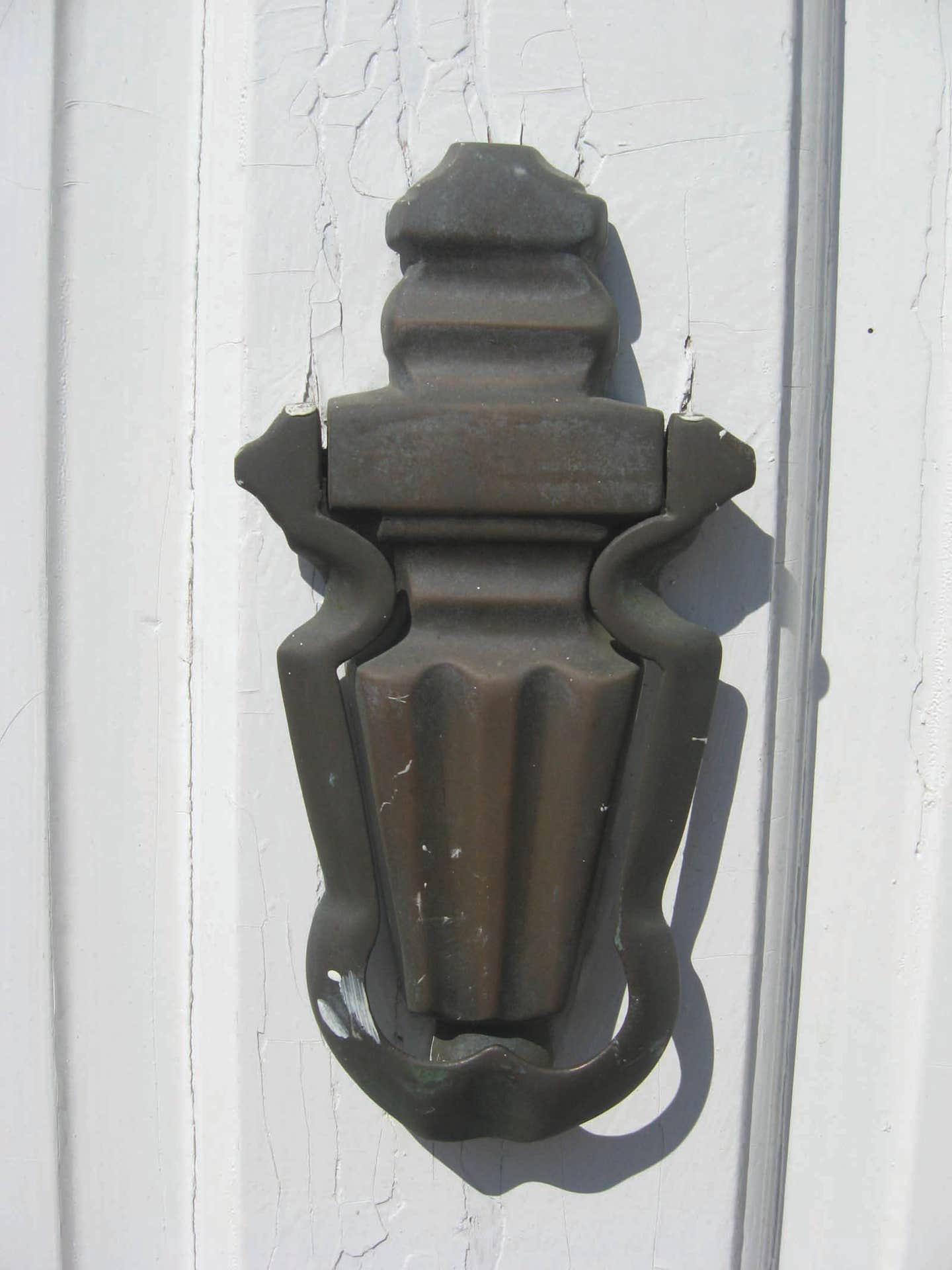
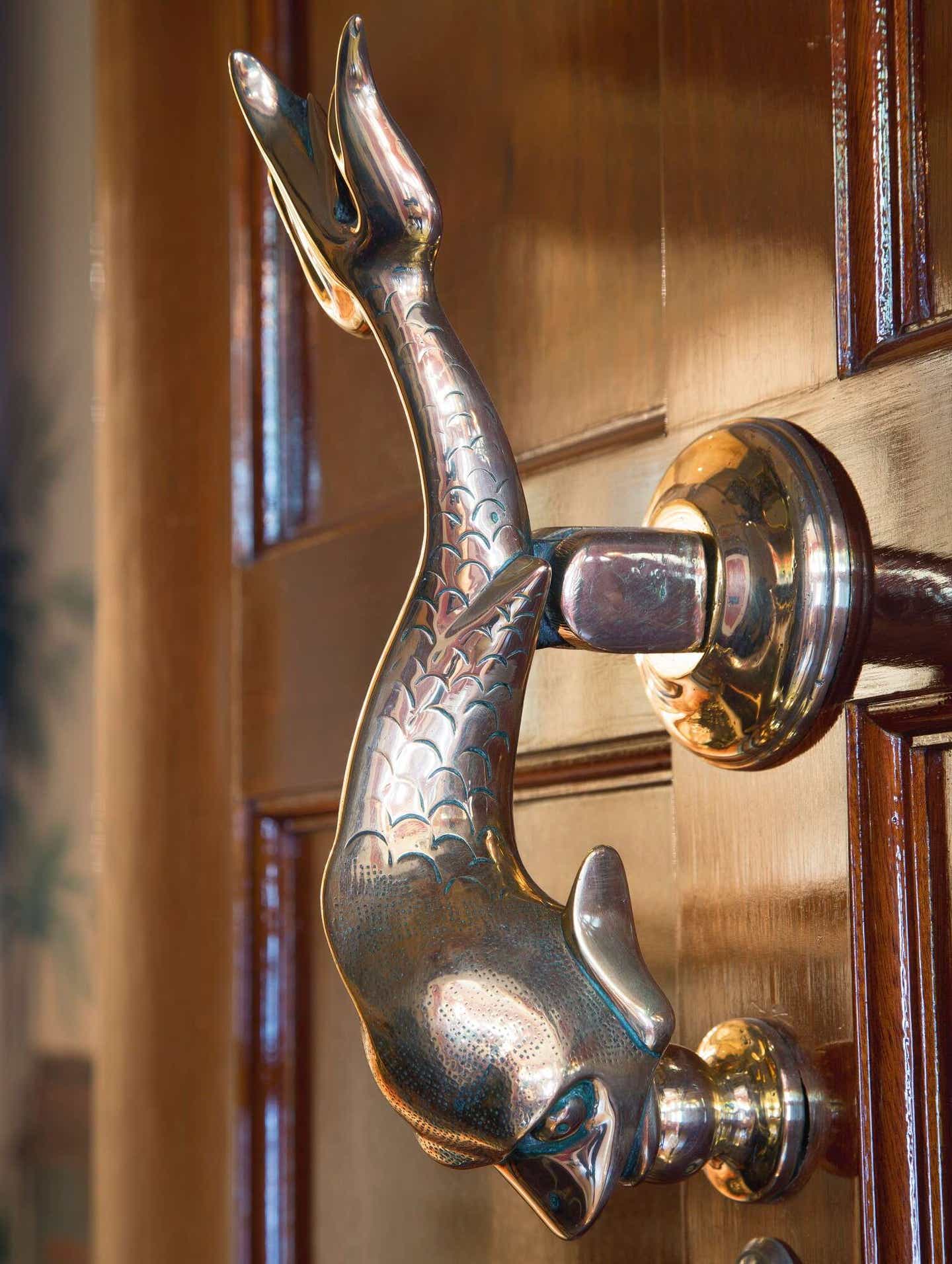
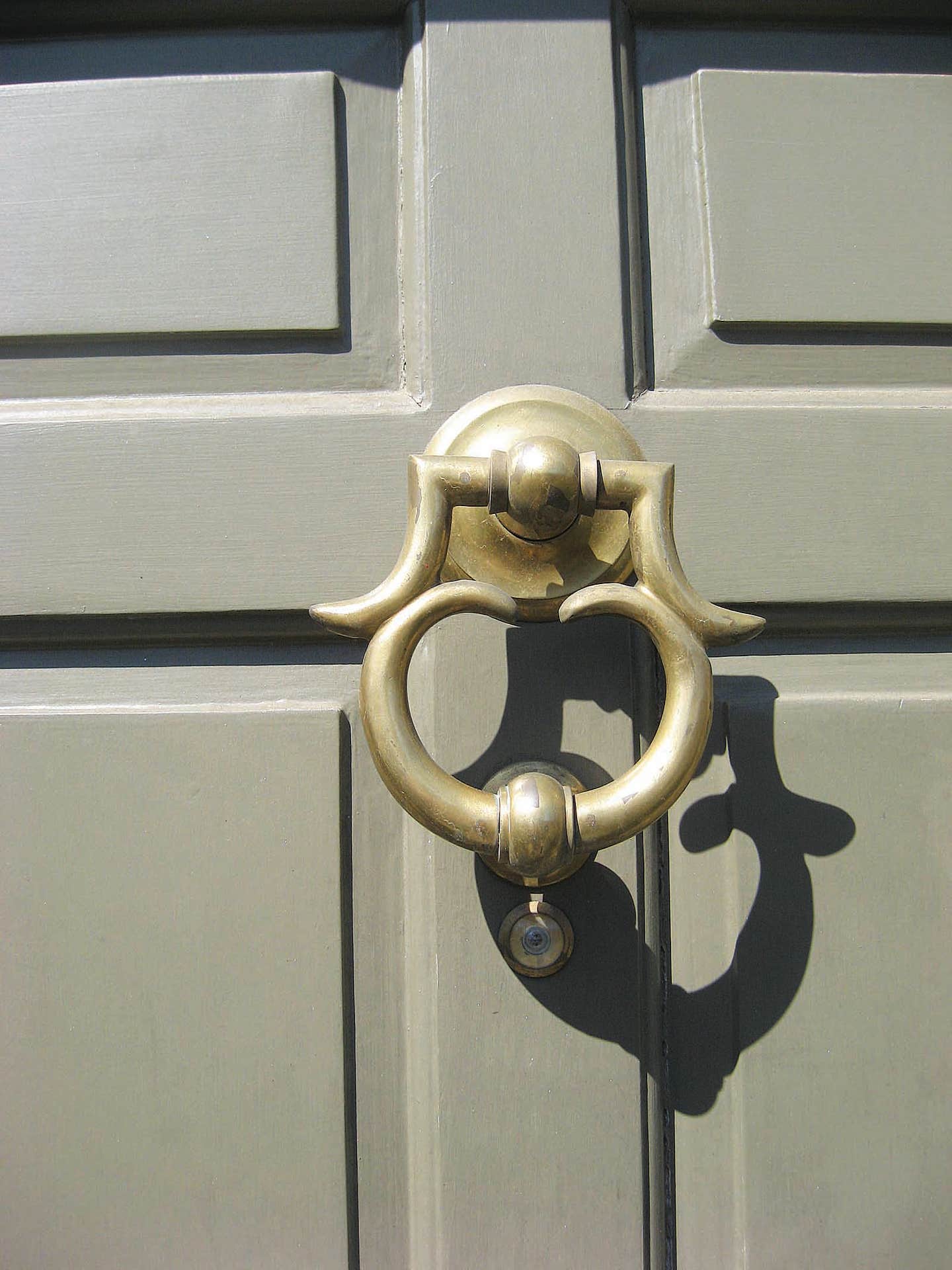
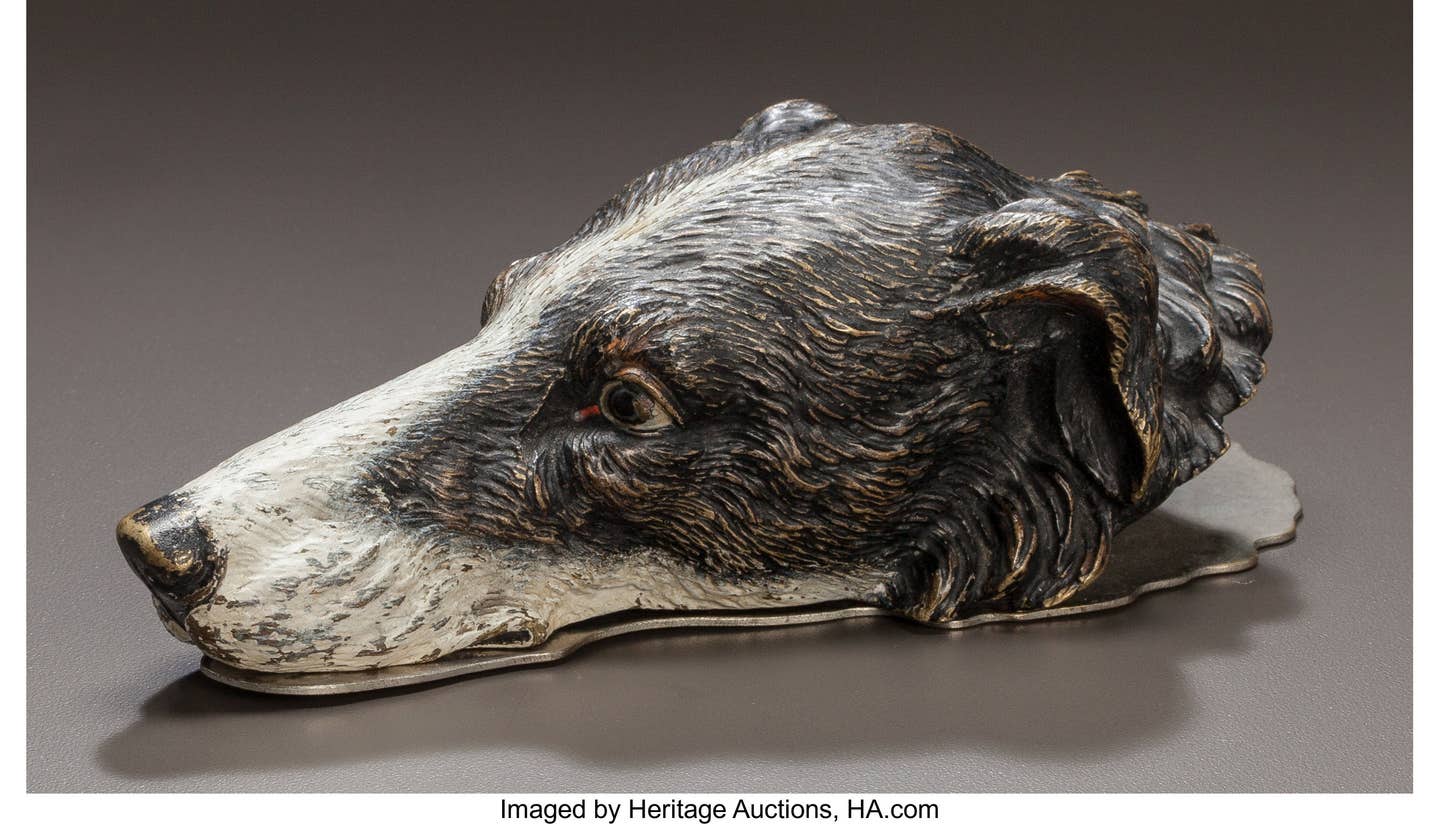
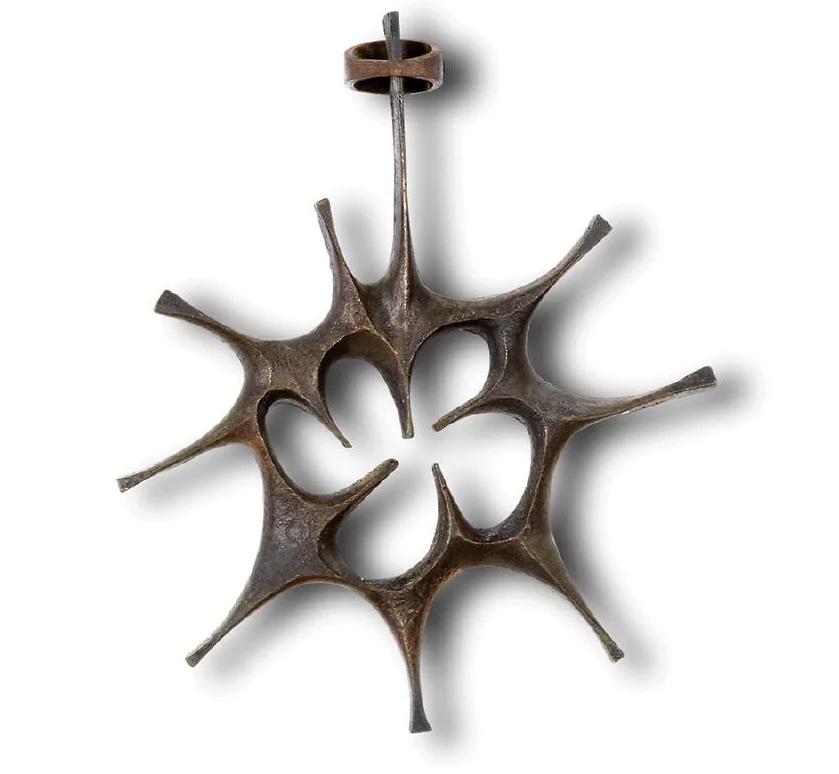
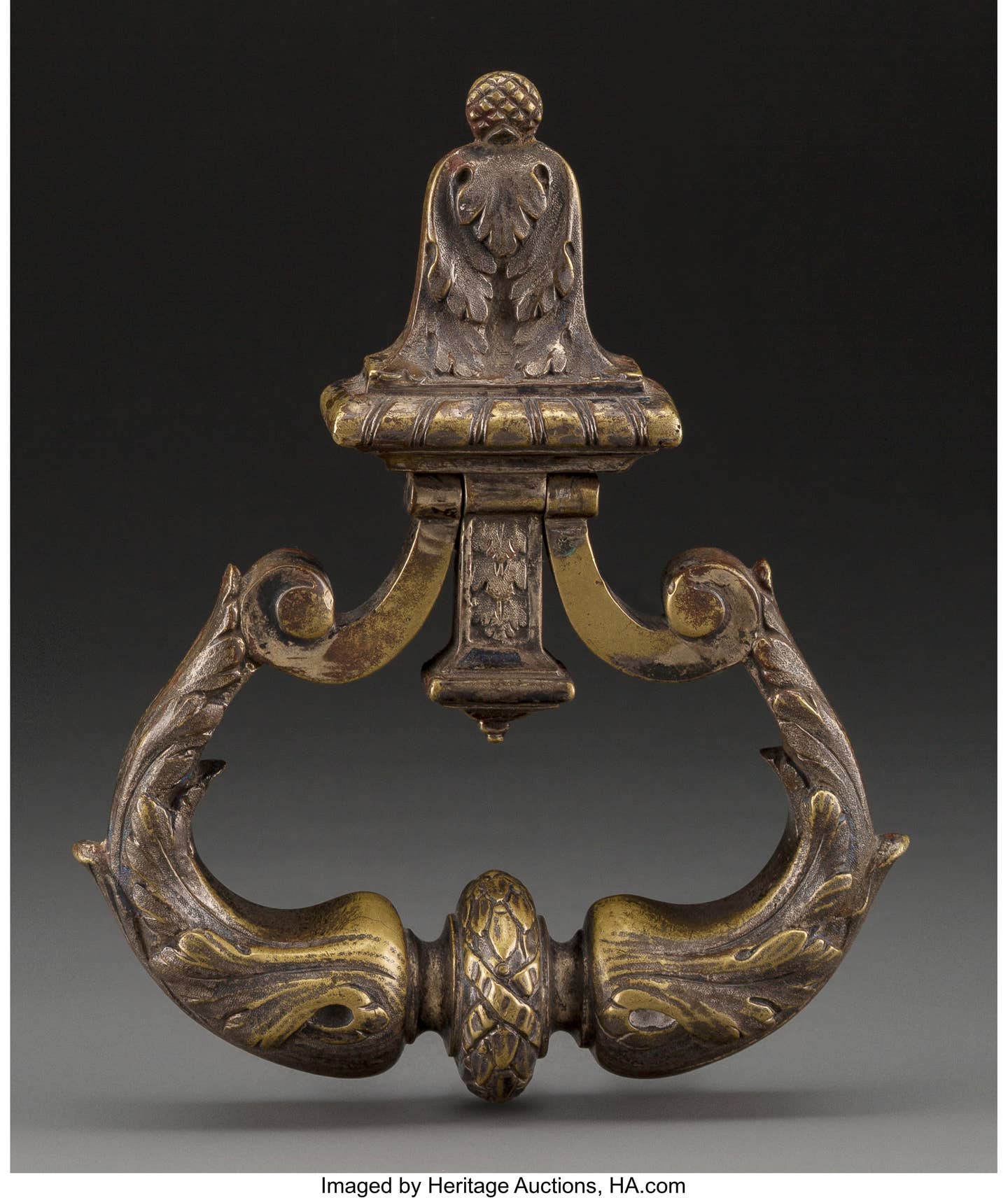
Sources
Wikipedia.org: Brasenose College, Oxford Patriots by A.J. Langguth
Old Door Knockers by Edwin Atlee Barber, (Bulletin of the PA Museum, Vol. 8, No. 29 January, 1910)








